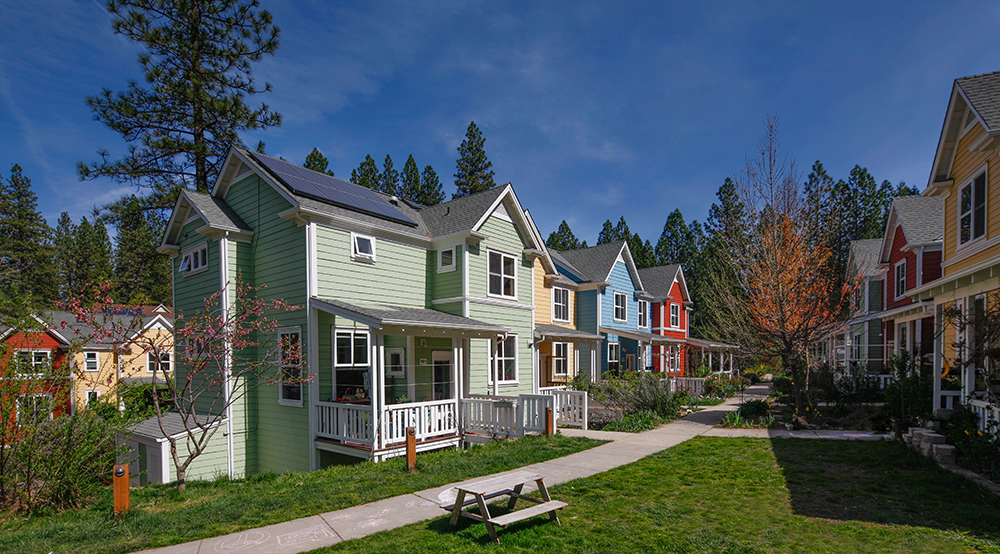what is cohousing?
There is a richness to be found from living in an intentional neighborhood with an appealing quality of life. And yet, what are the practical implications that flow from this comment? What trade offs are each of us willing to make as we consider the life changing nature of moving towards actively connecting with a community?
 In sifting through a broad spectrum of ideas, cohousing has emerged as a particularly attractive model for a dharma community, regardless of the location. Cohousing has become an increasingly well traveled path in this country as more and more people have discovered what it has to offer. A typical project is likely to be 25 – 30 housing units with a multipurpose community center. Some are larger, and som smaller.
In sifting through a broad spectrum of ideas, cohousing has emerged as a particularly attractive model for a dharma community, regardless of the location. Cohousing has become an increasingly well traveled path in this country as more and more people have discovered what it has to offer. A typical project is likely to be 25 – 30 housing units with a multipurpose community center. Some are larger, and som smaller.
Cohousing is an intentional community of private homes clustered around shared space. Each attached or single family home has traditional amenities, including a private kitchen. Shared spaces typically feature a common house, which may include a large kitchen and dining area, laundry, and recreational spaces. Shared outdoor space may include parking, walkways, open space, and gardens. Neighbors also share resources like tools and lawnmowers.
Households have independent incomes and private lives, but neighbors collaboratively plan and manage community activities and shared spaces. The legal structure is typically an HOA, Condo Association, or Housing Cooperative. Community activities feature regularly-scheduled shared meals, meetings, and workdays. Neighbors gather for parties, games, movies, or other events. Cohousing makes it easy to form clubs, organize child and elder care, and carpool.